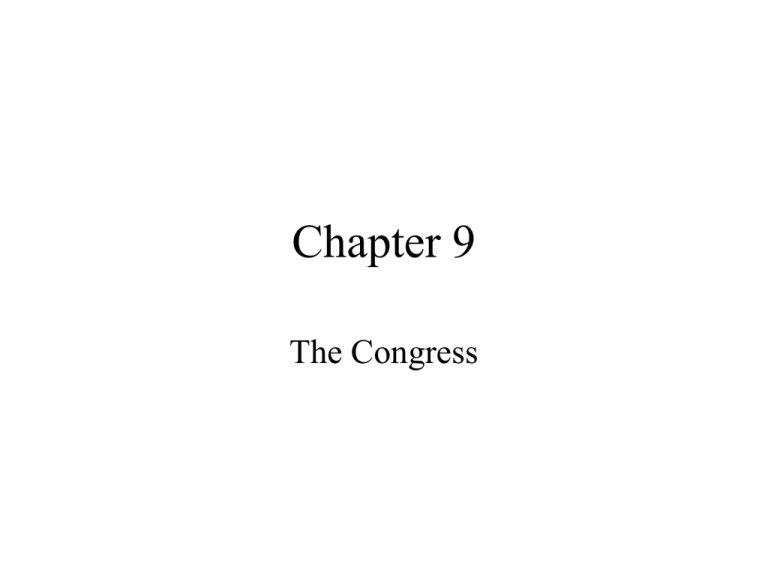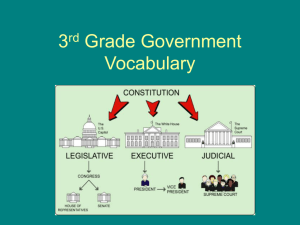Chapter 9
advertisement

Chapter 9 The Congress Why was Congress Created? • founders feared tyrannical rulers • founders also had experienced the weakness of the congress under the Articles of Confederation • bicameralism attempts to balance the power among large and small states The Powers of Congress Enumerated powers • come from Article I, section 8 of the Constitution • • • • control of money regulation of trade beyond state borders regulation of military defining the court structure Implied powers • come from the necessary and proper clause • come from the Supreme Court’s ruling in McCulloch v. Maryland allows Congress to enact laws that may assist the Congress in accomplishing goals directly related to the enumerated power The Functions of Congress • lawmaking • constituent service (casework) • representing • as a trustee • as an instructed delegate • as a combination of roles • oversight • public education • conflict resolution Differences Between the House and the Senate HOUSE* Members chosen from local districts Two-year term Originally elected by voters May impeach (indict) federal officials Larger (435 voting members) More formal rules Debate limited Less prestige and less individual notice Originates bills for raising revenues Local or narrow leadership More partisan SENATE* Members chosen from an entire state Six-year term Originally (until 1913) elected by state legislatures May convict federal officials of impeachable offenses Smaller (100 members) Fewer rules and restrictions Debate extended More prestige and more media attention Has power to advise the president on, and to consent to, presidential appointments and treaties National leadership Less party loyalty * Some of these differences, such as the term of office, are provided for in the Constitution. Others, such as debate rules, are not. Comparing Congresspersons and the Citizenry Congressional Elections • operated by individual state governments • House of Representatives – – – – elected every two years by popular ballot number of seats is determined by population each state has at least one representative each district has about a half million residents • U.S. Senate – elected every six years – by popular ballot (since ratification of the Seventeenth Amendment) – one third of the Senate is elected every two years – each state has two Senators Congressional Reapportionment reapportionment – the allocations of seats in the House of Representatives to each state after each census vs. redistricting – the redrawing of the boundaries of the districts within each state • gerrymandering • minority-majority districts The First “Gerrymander” The Committee Structure of Congress • • • • standing committees select committees joint committees conference committees Leadership in the U.S. Congress • House of Representatives – – – – – Speaker of the House House Majority Leader House Minority Leader House Majority Whip House Minority Whip • U.S. Senate – President of Senate (Vice President of U.S.) (essentially ceremonial) – President pro tem of the Senate – Majority Floor Leader – Minority Floor Leader – Senate Majority Whip – Senate Minority Whip Hot Links to Selected Internet Resources: • Book’s Companion Site: http://politicalscience.wadsworth.com/schmidtbrie f2004 • Wadsworth’s Political Science Site: http://politicalscience.wadsworth.com • U.S. Senate: http://www.senate.gov • U.S. House of Representatives: http://www.house.gov • Roll Call Newspaper Online: http://www.rollcall.com








